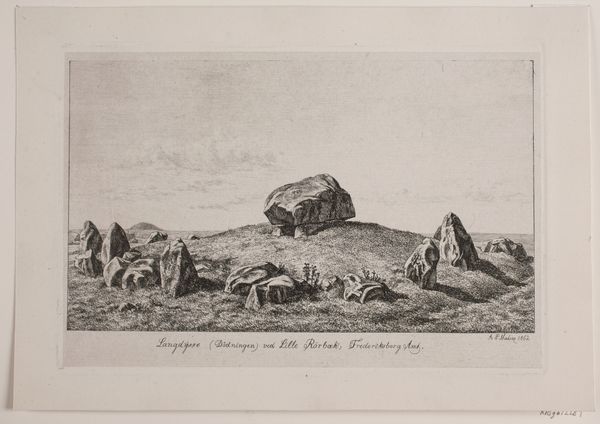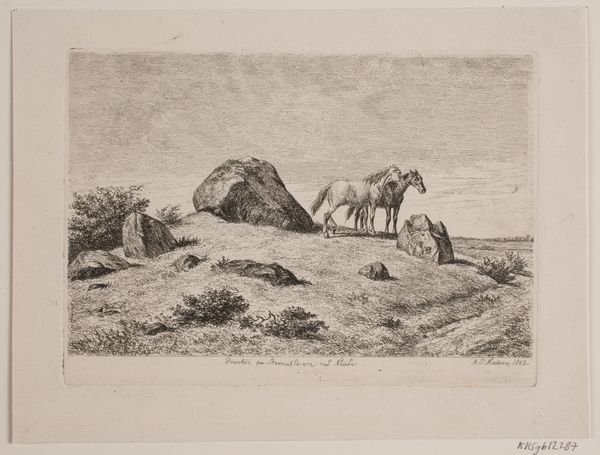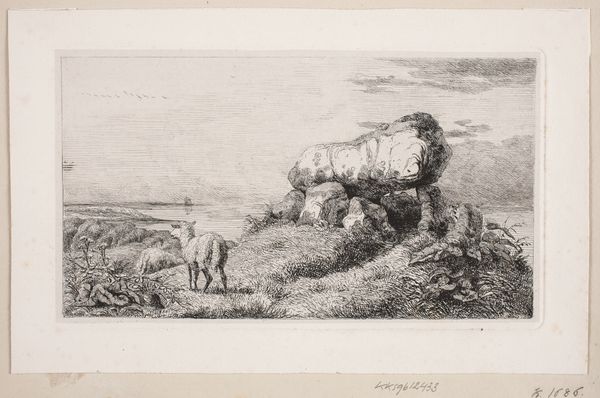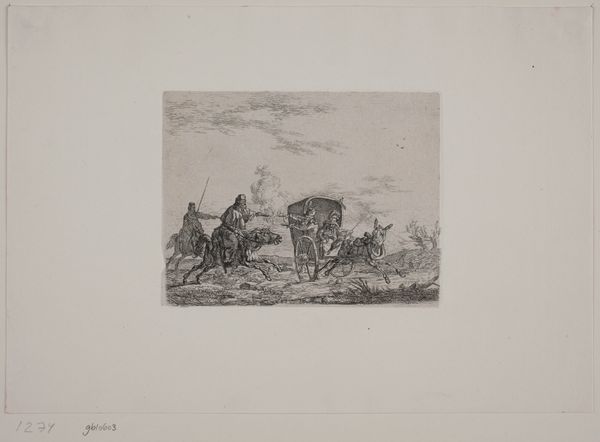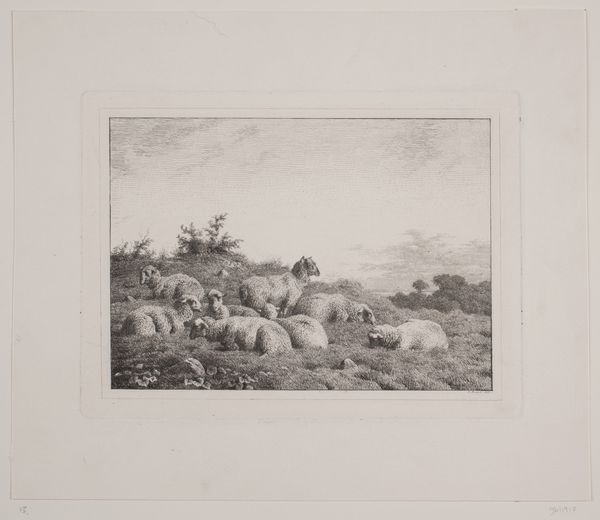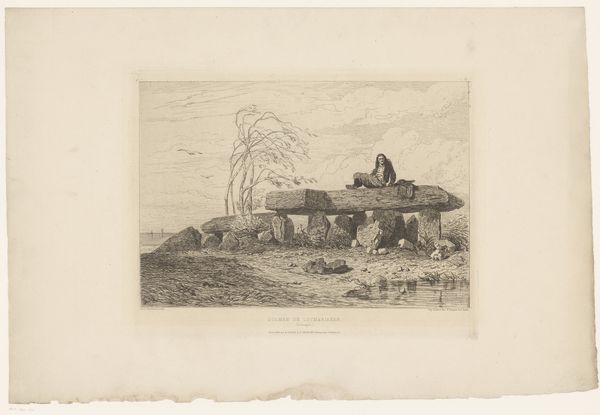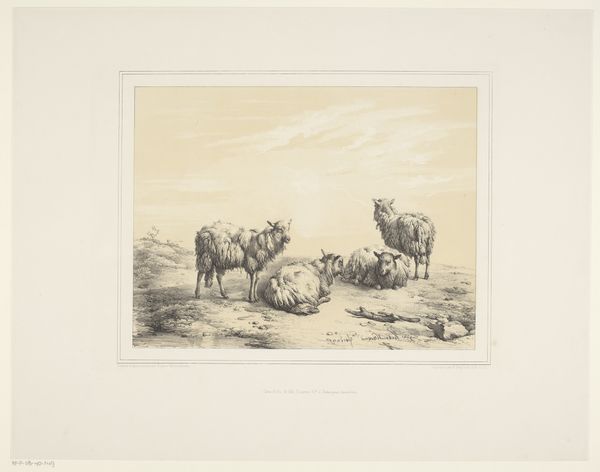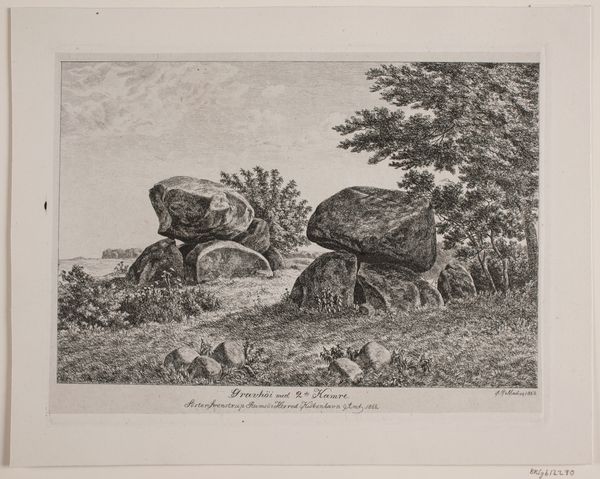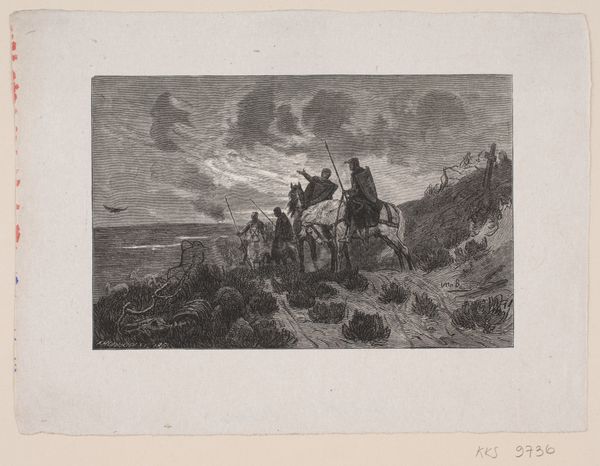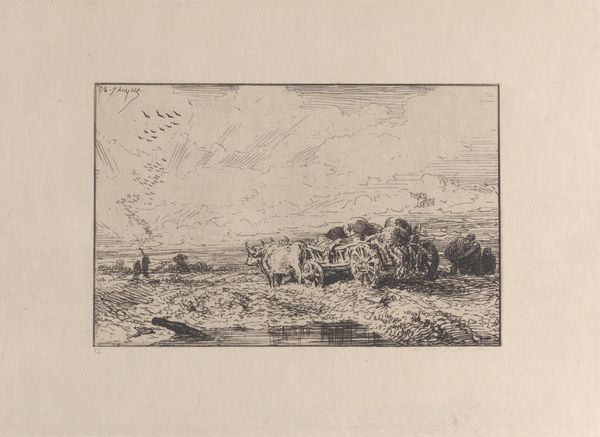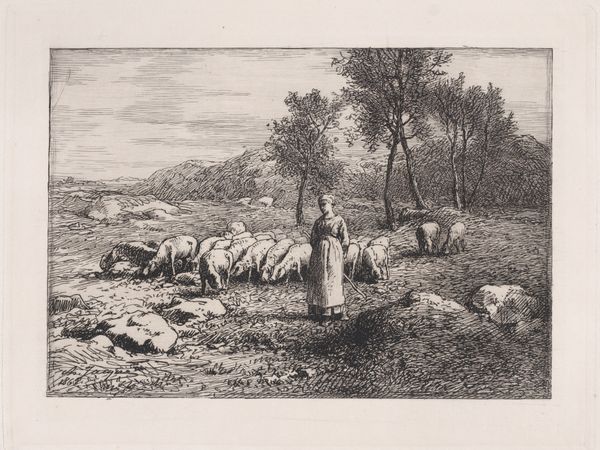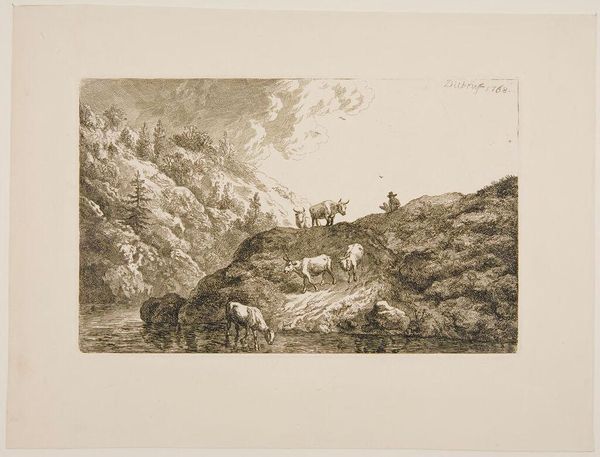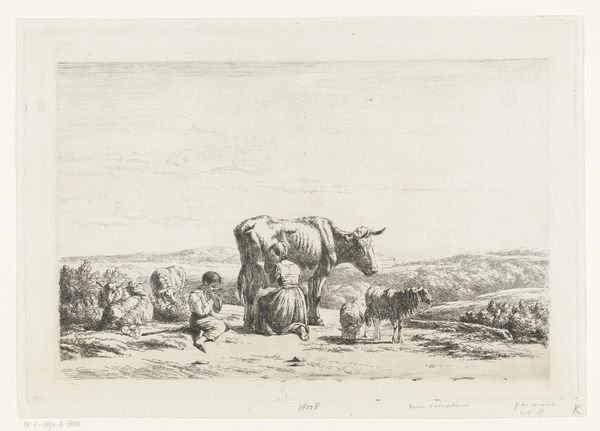
Dimensions: 200 mm (height) x 255 mm (width) (plademaal)
A.P. Madsen made this print of a dolmen, a stone burial chamber, sometime before his death in 1911. It’s made using etching, a printmaking process that involves using acid to bite lines into a metal plate, which is then inked and printed. Look closely, and you can see how the etched lines define the form of the stones, the texture of the grass, and the woolly coats of the sheep. The etching process allowed Madsen to create a high level of detail, capturing the rough, weathered surfaces of the stones and the subtle variations in tone and texture. Printmaking is a craft, one that requires an intimate understanding of materials and processes. In its own way, etching is a means of mass production; many identical images can be made. Yet, the etching also allowed Madsen to explore his fascination with ancient monuments, in a manner that's both replicable, and highly individual. This print invites us to consider the relationship between art, craft, and the representation of cultural heritage.
Comments
No comments
Be the first to comment and join the conversation on the ultimate creative platform.
